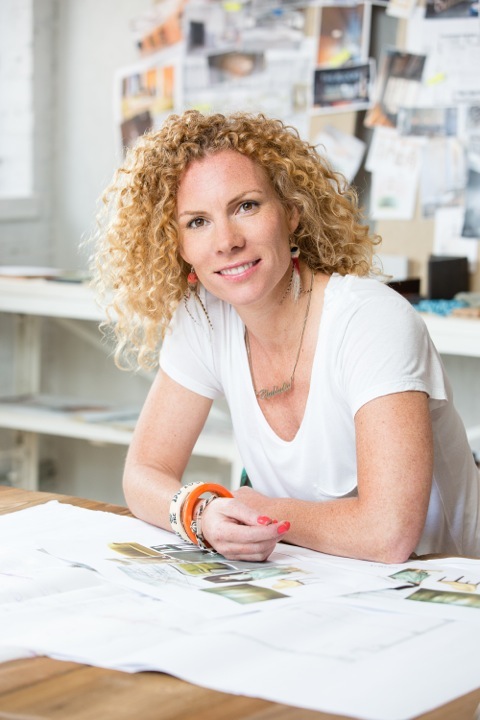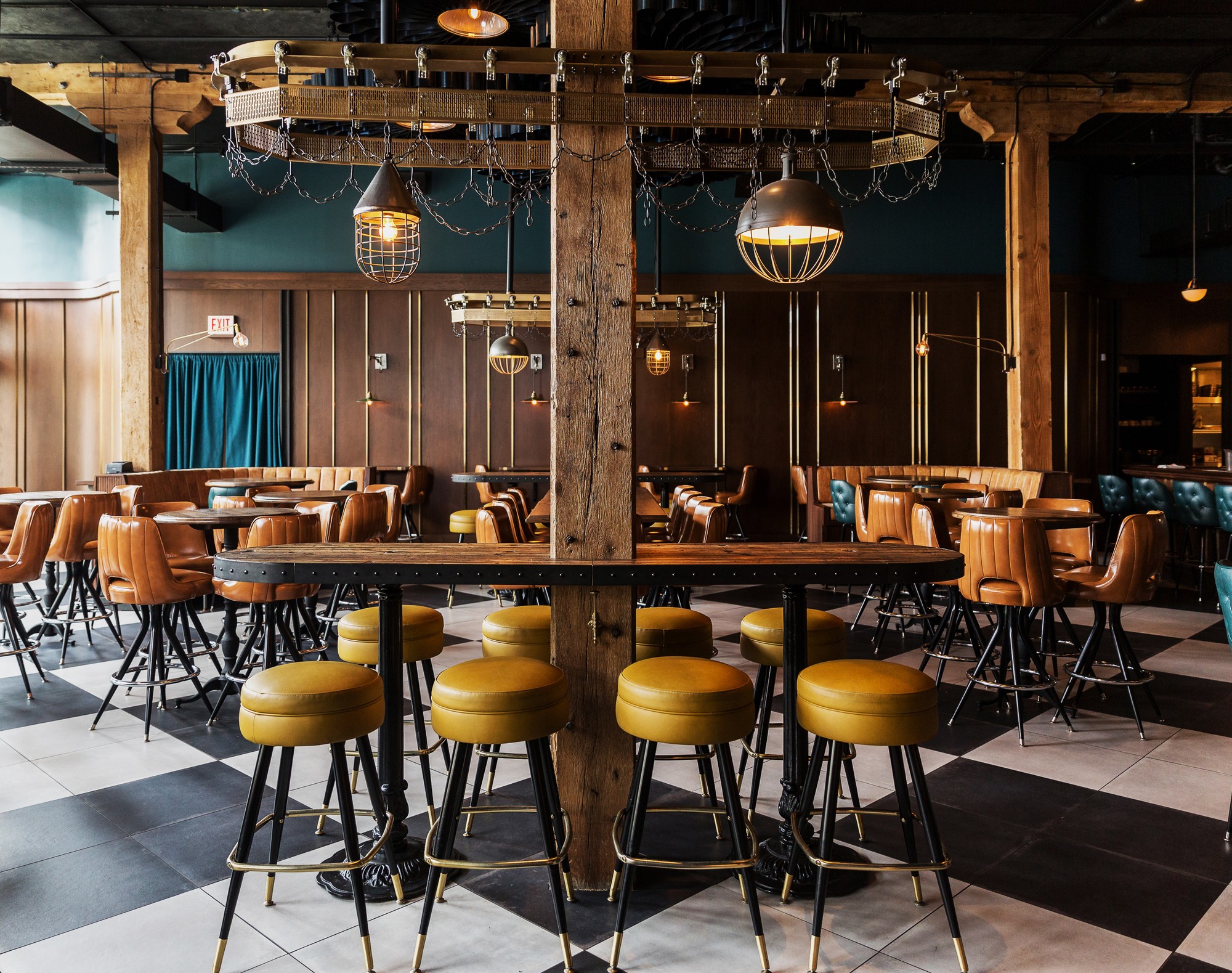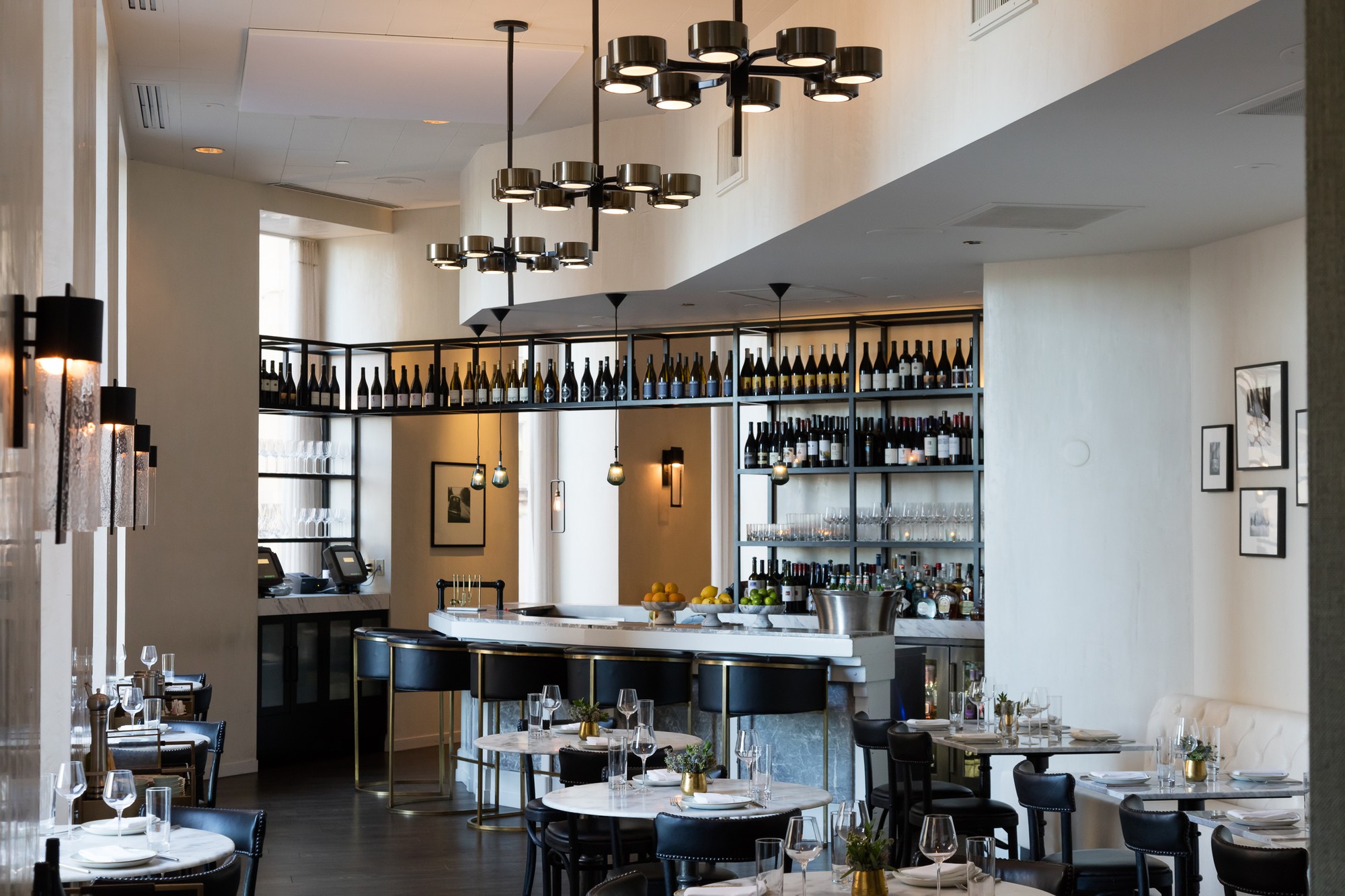Real Talk is our weekly series about the peaks, pitfalls, and perils of the food world. Every Friday, we’re taking you to the heart of food’s most glamorous (and difficult) projects. From pop-up dinners to pop-tart marketing, hyper-local restaurants to global food empires, peek behind the curtains of food & drink’s dreamiest initiatives and get—you guessed it—the real talk.
This week, we get the low-down from Karen Herold, the woman responsible for the look and feel of some of Chicago’s most buzz-worthy restaurants, including Girl & the Goat, Salero, Monteverde, and the forthcoming GT Prime.
as told to Nicole Schnitzler
____________________________
In the beginning of my career, I was mostly creating environments to reflect someone else’s plan. Luckily those were really well known brands; I designed the Playboy Club with Hugh Hefner, and through that we got work with the Dallas Cowboys and the Green Bay Packers. About seven years ago, Boka group founders Rob Katz and Kevin Boehm asked me to design Girl & The Goat. That was the first time I could actually create a brand myself. It wasn’t like I had to put gold bunnies everywhere, so that was nice.
Our restaurants each look so completely different, but the one thing that is consistent is that they are emotion-based designs. We always start by thinking about the way people want to feel or need to feel in the spaces we create. My client is my muse. I’m designing Giuseppe Tentori’s new restaurant GT Prime now, and every single choice I make is in the hopes that he walks in and is like, “this is exactly the restaurant I’ve always wanted.
 Karen Herold at work. Photo by Eric Kleinberg
Karen Herold at work. Photo by Eric Kleinberg
With Girl & the Goat , I know that they still have an emotional relationship with that restaurant seven years later. It’s my goal to create a space that feels exactly the same five years from now as it does this second. It’s just about not paying attention to what all the magazines tell you to do. I never go to a client and say, “oh my gosh, blue is totally the color right now,” or “everyone is doing asymmetrical whatever.” I base the design on Giuseppe’s personality and his menu. As long as it serves them and it doesn’t serve the design industry—that’s my goal.
I believe there are two ways of working: one approach is an additive approach, where you make a series of decisions that then total up to a specific end result. There’s another way of working, which is how I happen to work, and that’s to start at the end. The minute I look at a floor plan or walk into a space, I almost always know the end result. If you wake up in the morning and you’ve had a dream, you can remember the whole dream, right? But the moment you want to tell someone about it, there are already many parts that are gone. Still, you knew that the moment you woke up. I have the vision of that dream space 99% of the time, often right away. My challenge then is figuring out what that dream was exactly, explaining it to my coworkers and my clients, and spending the weeks and months that follow in finding the pieces that make up that vision.
 The interior of The Betty, one of the restaurants Herold designed. Photo by Eric Kleinberg
The interior of The Betty, one of the restaurants Herold designed. Photo by Eric Kleinberg
I was recently talking with Kevin Boehm about this. You know that game we played when we were young, Connect the Dots? We’d go from one to two while looking for what the figure will be. There’s always this moment and you see, “oh, it’s going to be a giraffe!” You still want to complete that drawing and you need to connect those last six dots, but you already know it’s going to be a giraffe. That’s what designing a restaurant is like for me.
Many times clients ask, “what is it that you need from me for you to get started?” My answer is always the same: Just spend two hours with me. I most recently did this with Sarah Grueneberg of Monteverde. What we do doesn’t matter; we can go through your childhood photo albums, we can go to a bar and drink, we can go on a walk with your dog. All we need to do is hang out for two hours. After two hours it’s like a crystal ball; I know who they are as a person and what they want their space to be. My goal isn’t to turn it into a Karen place. My goal is to turn it into a place that feels as though Sarah was a designer and she created it.
I had a really difficult moment with Girl & the Goat. I knew it was a really important project and it was the first time I was working with Rob and Kevin, so I was nervous. I couldn’t come up with what the back bar was going to be. There’s always that part in a project when you start overthinking it. You’re doing 300 sketches and drawing more and more expensive and crazy things because you can’t think of anything.
 Another one of Karen’s designs, Cafe Spiagga. Photo by Jeff Kauck
Another one of Karen’s designs, Cafe Spiagga. Photo by Jeff Kauck
A friend of mine from Amsterdam was visiting me at the time and shopping by herself and wandering the town. I was getting so frustrated and upset that I just left the office in the middle of the day to meet her, and our very first stop was to an antique store on Fulton called Jan’s Antiques. It was such an awesome two-story antique store, and I had gone there every other week. I found a weird opening to a secret room: there were hundreds of doors were stacked against each other and covering the entrance to that room, and I squeezed into it. What I found was an entire room of maybe 80 metal Victorian fireplaces in every color of the rainbow. I just stood there and was like, “this is so cool.”
Those ended up becoming the back bar, and it was just waiting right there for me. It really taught me a good lesson, which I share with all of my designers now: “Go outside. Leave this stupid computer. Don’t think that every answer is on Pinterest. Don’t read other magazines to see what everyone else is doing. Go out, and you’ll find crazy stuff in weird places.”
For me, it doesn’t matter what you design. It really doesn’t. It matters who you’re doing it for, and what approach you’re using to do it. What it’s really about is creating environments that people want to return to, and that make them feel good. I really believe that interior design can change the way you feel, and if I can change that for the better—then that’s what I strive to do.










